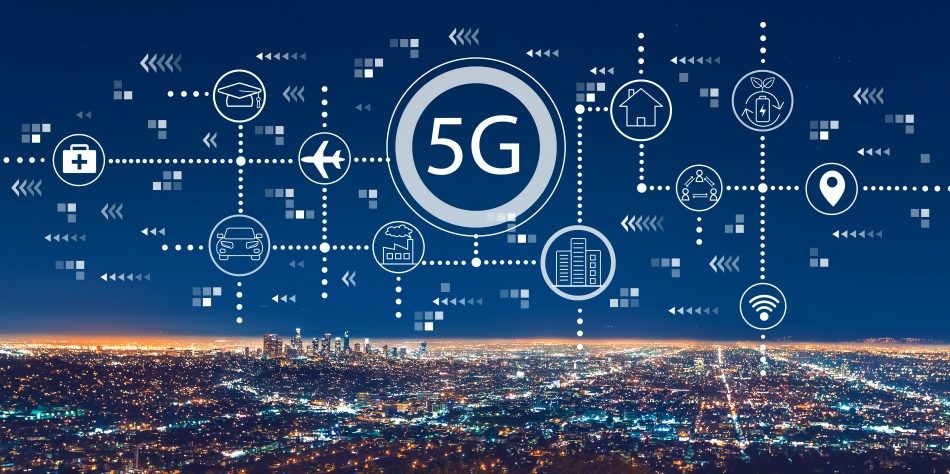As we move further into the 21st century, the demands on our connectivity infrastructure are evolving rapidly. Enter 5G, the fifth generation of mobile network technology, which promises to transform the way we live, work, and interact with the world around us. From enhanced mobile experiences to the Internet of Things (IoT) and beyond, 5G is set to revolutionize connectivity in ways that were once the stuff of science fiction. This article explores the impact of 5G technology, its benefits, applications, and the challenges it faces as it rolls out globally.
1. Understanding 5G Technology
5G represents a significant leap from its predecessors, offering faster speeds, lower latency, and increased capacity. It is designed to meet the growing demands of an increasingly connected world, supporting a vast array of devices and applications. Here’s what sets 5G apart from previous generations:
- Higher Speeds: 5G networks offer download speeds up to 100 times faster than 4G LTE, with theoretical speeds reaching up to 10 Gbps. This translates to quicker downloads, smoother streaming, and faster data transfers.
- Lower Latency: 5G reduces latency to as low as 1 millisecond, compared to around 30 milliseconds for 4G. This near-instantaneous communication is crucial for real-time applications such as autonomous vehicles and virtual reality.
- Increased Capacity: 5G can support a significantly higher number of connected devices per square kilometer. This is essential for accommodating the growing number of IoT devices and ensuring seamless connectivity in densely populated areas.
- Network Slicing: 5G introduces the concept of network slicing, allowing operators to create multiple virtual networks on a single physical infrastructure. This enables customized network experiences tailored to specific needs, such as enhanced reliability for mission-critical applications or high-speed connectivity for media streaming.
2. Applications and Benefits of 5G
The impact of 5G extends across various sectors, offering numerous benefits and enabling groundbreaking applications:
- Enhanced Mobile Experiences: 5G enhances mobile experiences by providing faster download and upload speeds, improved video streaming quality, and more responsive gaming. This results in a more immersive and satisfying experience for users.
- Autonomous Vehicles: For autonomous vehicles, 5G’s low latency and high reliability are essential. Real-time communication between vehicles and infrastructure enables safer and more efficient operation, allowing for instant updates on road conditions, traffic, and obstacles.
- Smart Cities: 5G supports the development of smart cities by connecting a multitude of IoT devices and sensors. This connectivity enables smarter traffic management, efficient energy use, and enhanced public safety through real-time monitoring and data analysis.
- Industrial IoT: In industrial settings, 5G facilitates the integration of IoT devices and systems, enabling real-time monitoring and automation of manufacturing processes. This leads to increased efficiency, predictive maintenance, and improved overall productivity.
- Healthcare: 5G can transform healthcare by enabling telemedicine, remote surgeries, and real-time health monitoring. The low latency and high bandwidth support high-quality video consultations and the transmission of large medical data sets, improving patient care and accessibility.
- Virtual and Augmented Reality: 5G provides the bandwidth and low latency required for immersive virtual reality (VR) and augmented reality (AR) experiences. This technology can revolutionize gaming, training, education, and remote collaboration by delivering high-quality, interactive content.
3. Challenges and Considerations
Despite its promise, 5G technology faces several challenges that need to be addressed:
- Infrastructure Development: Implementing 5G requires significant investment in infrastructure, including the deployment of new base stations and antennas. The rollout can be costly and time-consuming, particularly in rural or underserved areas.
- Spectrum Availability: 5G networks operate across different frequency bands, including sub-6 GHz and millimeter-wave (mmWave) bands. While mmWave offers higher speeds and capacity, it has limited range and penetration, requiring a denser network of small cells.
- Security and Privacy: As with any new technology, 5G introduces new security and privacy concerns. The increased number of connected devices and the complexity of the network raise potential risks, including vulnerabilities to cyberattacks and data breaches.
- Health Concerns: The deployment of 5G technology has raised concerns about potential health effects from increased exposure to radiofrequency electromagnetic fields. While research is ongoing, regulatory bodies are continuously reviewing safety standards to address public concerns.
- Interference with Existing Technologies: 5G must coexist with existing technologies and services, which can lead to interference issues. Ensuring compatibility and minimizing disruption to current networks and devices is a key consideration during the rollout.
4. The Future of 5G
Looking ahead, several trends and developments are expected to shape the future of 5G technology:
- Expansion of 5G Networks: The global rollout of 5G is expected to accelerate, with more regions gaining access to high-speed, low-latency connectivity. This expansion will drive innovation and adoption across various industries.
- Integration with Other Technologies: 5G will increasingly be integrated with other emerging technologies, such as edge computing and artificial intelligence. This synergy will enhance the capabilities of both 5G and these complementary technologies, leading to new applications and services.
- Evolution to 6G: Research into the next generation of mobile networks, 6G, is already underway. 6G is expected to build on the foundations of 5G, offering even greater speeds, capacity, and new capabilities, further advancing connectivity and digital experiences.
- Increased Focus on Sustainability: As the deployment of 5G networks expands, there will be a growing emphasis on sustainability and environmental impact. Efforts will focus on energy-efficient technologies, reducing the carbon footprint of network operations, and recycling electronic waste.
Conclusion
5G technology is set to revolutionize connectivity by delivering faster speeds, lower latency, and increased capacity. Its impact will be felt across a wide range of applications, from enhancing mobile experiences to enabling the growth of smart cities and industrial IoT. While challenges remain, ongoing advancements and investments in 5G infrastructure and technology promise to unlock new opportunities and drive innovation. As we embrace the era of 5G, staying informed and prepared for its developments will be essential for leveraging its full potential and shaping the future of connectivity.
